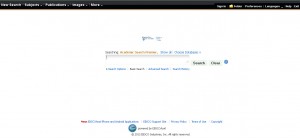I sit here with a Steven Covey matrix open and then a list of priorities and I realize the one thing I don’t really have anything doing in is this, my poor blog, which has been going in one way or another since 2000 (and technically 1999) when I was 15 and 16 and decided I would try to learn HTML. My “regular” readers will have noticed I changed to a stock theme, because my ability to do custom WordPress themes has diminished somewhat over the years. My old theme wasn’t really speaking to me any more, and this one isn’t either, but until I have time to sit down and code my with my responsive steampunk that still manages to load fairly fast vision theme this will have to do. I did dip a toe into Ello to replace my LiveJournal feelings place, but guess that didn’t grab me either. It’s taking the time for myself (and in the enlarging my worldview and abilities sense, not playing Dots and doing my nails sense) that seems to be the problem here.
So: time. I had a baby about 10 months ago, as everyone has probably picked up on. I have many thoughts about technology and babies and so on, which I will get into as I work some of these ideas into a presentation (maybe 2?) in February. Time is the other important concept that having a baby alters. John Hodgman always says to participants without kids on Judge John Hodgman that they have so much free time and don’t know it, despite what they may think. At first it seemed I had nothing but time, to the point where I did conference calls for committee meetings during maternity leave since I was bored. But slowly all extra time seemed to vanish as I did things like buy a house and take on yet more projects and committee memberships and professional development opportunities. We are now going to implement a new ILS (integrated library system) and discovery layer, so that is a good opportunity for me to revisit all my commitments and step back on some. Or lean into all of them? I enjoyed Sheryl Sandberg’s book, even if I know it’s not exactly describing my life, or even that of most people. But I do appreciate the message that if you are in the position to set a good example, you should do so. (Though I do worry about people who set unhealthy examples–and honestly, leaving the office at 5:30 is still pretty late. Make it 4:30 and then we can talk.)
The other thing is that in general I am not happy with the internet, or perhaps specifically the pieces of the web that thrive on constantly updated streams of content. Today is a perfect example. There was a traumatic event that lots of people are responding to, but retweeting or writing an explainer is not action. This year has been so wretched for so many people that I more or less have a policy of saying nothing about anything real online, other than very specific library technology issues to which I can give an informed opinion. What’s the use in doing otherwise? I feel the need to defend my not sinking myself into vitriol on a daily basis, but at the same time, I can have my private opinions, thoughts, and sorrows without sharing them with the world. Perhaps what I feel the need to defend is that I do feel strongly about a lot of things, but I want time and space to formulate a useful thought beyond a hashtag.


